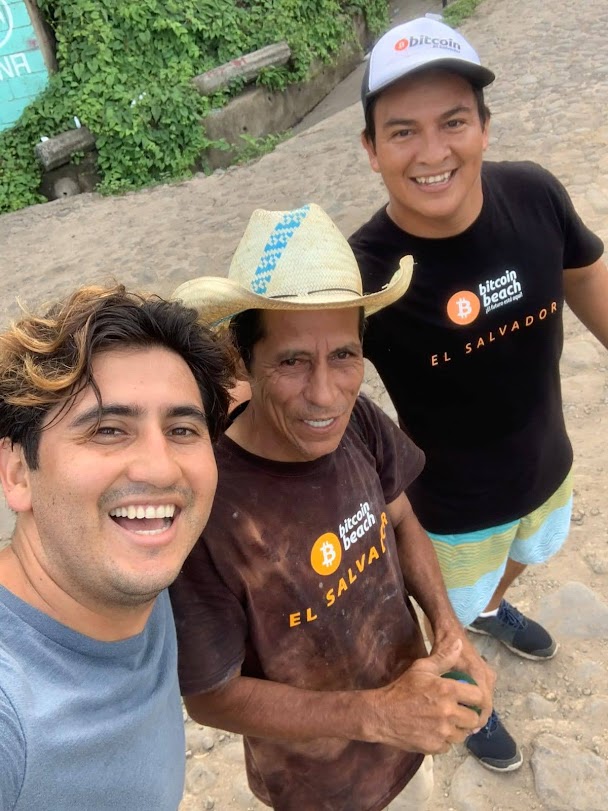How to Transform a Poor Community Using Bitcoin


In my blog last week, I shared the story of El Zonte, El Salvador, a town that decided two years ago to switch its currency to bitcoin.
Most people, when they think of bitcoin, think of it as a speculative investment that has gone from being worth pennies to hitting all time highs this fall and $66,444 at this writing. But it is so much more than that. Like the internet itself, it is a disruptive technology that will remake our lives in profound ways.
Bitcoin is based on a revolutionary invention: blockchain. By sharing the same information in real time around the world, blockchain technology eliminates the possibility of counterfeiting. It makes it possible for strangers to trust one another because they trust the blockchain. It will radically transform our financial system in years to come.
Bitcoin is an investment because the number of coins is limited and publicly validated. As opposed to dollars or pesos, more cannot be printed. So yes, it can be an investment, but it also serves as a currency – a unit of exchange that, because it functions peer-to-peer, has almost no transaction fees associated with it.
In developing countries like El Salvador, because it is digital, bitcoin is a faster, cheaper way to handle the transfer of funds from America where relatives are working than Western Union.
But the real power of bitcoin to revolutionize the lives of those trapped in poverty is in changing their mentality from survival to being able to plan for a future where they have resources. It does this by creating a virtual banking system accessible from our phones.
In last week’s blog, I introduced you to Adrian, an illiterate day laborer whose life was changed when he was paid in bitcoin. But that was just one half of the equation – the demand side. To empower Adrian, he needed to have places to spend his newfound currency – he needed shops that would take his bitcoin.
To make El Zonte a bitcoin-based economy, shops had to be persuaded that it would be safe for them to take bitcoin. They had to know that they would then be able to use the bitcoin to either save or to buy other goods and services.
In a way, this required a community-wide corporate trust fall. Someone had to have enough trust relationships to persuade (and in some cases guarantee) that it would be safe to make this transition to bitcoin. Shop owners and people like Adrian needed to know that they would not be playing a game of musical chairs and be left without a seat when the music stopped.
This person was Mike Peterson, a surfer who had moved his family to El Zonte years ago and had established a local ministry called Hope House, a ministry with hundreds of trust-based relationships community wide.
Mike and his team told the shop owners they knew “trust us – we will make sure you don’t lose out if you’ll take this risk.”
The older shop owners didn’t want anything to do with it. They didn’t understand the digital economy. So Mike began by going to the young people in El Zonte. Using funds provided by a donor, he began paying them in bitcoin to clean the beaches. Then he got some of the shops to accept it. They made money from the kids who spent there.
When other shop owners and businesses saw that they could make money, it took off. The micro-economy was working!
El Zonte is ground zero for a financial revolution that will circle the globe, empowering young people. Other nonprofits like Hope House will spring up specializing in the process that Mike pioneered.
40 years ago, I saw this same dynamic with micro-credit as I worked in Indonesia. After successful models were established, billions of dollars poured into such efforts. And 30 years ago, my wife and I were among the first to homeschool our kids. Last year during the number of homeschoolers grew to almost 4 million. Revolutions take time and begin with early adopters.
Today in subSaharan Africa, 41% live on less than $2 a day. That number will drop as more and more villages are introduced to a bitcoin-based economy and children are educated by connecting to free online learning programs like Khan Academy.
I want to help those who will lead this movement. Matt Gerber is an example. He will take the learnings from El Zonte and apply them in Jeffrey’s Bay, South Africa, a town where he has hundreds of trust relationships.
And once Matt has figured out what works, he’ll take that model to the ministry he helps run in Eswatini that feeds 8,000 vulnerable children in 40 communities. These are children who not only deserve a good meal daily, they deserve an education and access to opportunity. In the years ahead, I believe they will get both.* This is a model that will go worldwide.
*I’ll periodically report on the progress of this project and give readers the opportunity to participate in it.



Creativity. Innovation. Strategic problem solving. All of these gifts in the Body of Christ flow from our Creator. One characteristic of AIM since its inception Seth has been to incubate new tools for the Great Commission work. It’s an unfolding legacy. Love you.
Butch
If you are not interested in the why’s of doing these things from the financial angle. don’t continue reading this….
PART ONE
Travelling and researching the developing world for the past 25 years you can experience the difference between the official state issued fiat currency and what people SAVE with and what they TRANSACT with (they can be two different things, Indian women save with gold jewelry for instance). Data from over five years ago from Brazil showed that paper money there was (in dollar terms) $1 of REAL for every $5 of US Dollar (USD). This feature has been around for a long time and is spreading rapidly to a list of countries that would be obvious. Both in breadth (more countries) and in depth (the % of savings or transactions in $USD or $EU) this is both increasing (first derivative is velocity) and accelerating (2nd derivative).
Given the long term goals of the US Fed and the incredible changes made in 2008 the US has essentially taxed the world through inflation. If you held $USD 15 years ago in Brazil, you were guaranteed to be taxed by at least 2% due to inflation of the currency. Given your alternatives this seemed “fair” and “relatively painless”. The FED has been the most profitable private institution in the world for years.
But what if the tax is 6 percent, or using the historic measures of inflation 18% (which it is now). Said differently from a citizen of Brazil’s perspective, what if you didn’t want to subsidize the rich Americans anymore.
From a theological perspective does this apply: Leviticus 19:35-36
‘You shall do no wrong in judgment, in measurement of weight, or capacity. You shall have just balances, just weights, a just ephah, and a just hin; I am the Lord your God, who brought you out from the land of Egypt.’
Or does this worry us: Ezekiel 45:9-10
‘Thus says the Lord God, “Enough, you princes of Israel; put away violence and destruction, and practice justice and righteousness. Stop your expropriations from My people,” declares the Lord God. “You shall have just balances, a just ephah and a just bath.’
I will leave it at that for Part One.
*waiting for part 2*